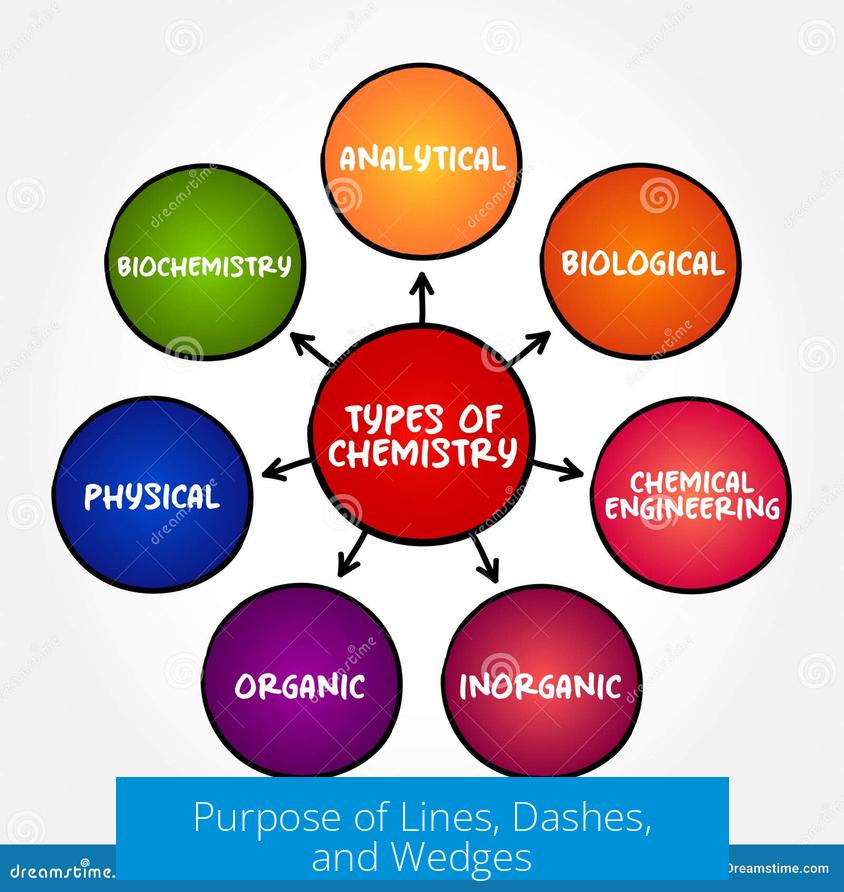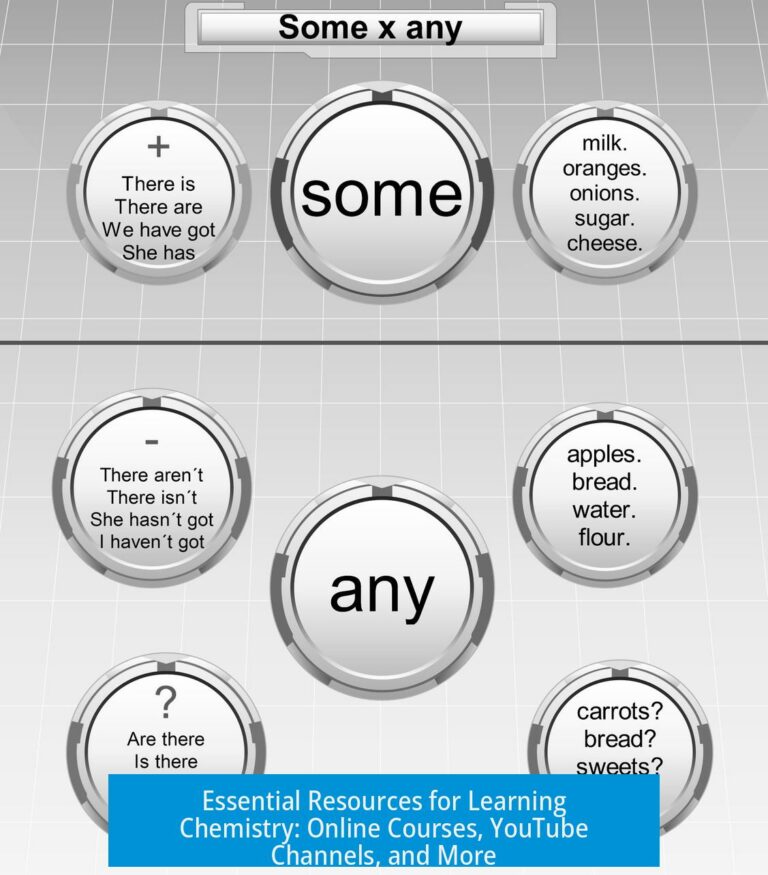Lines, dashes, and wedges in organic chemistry drawings depict the 3D orientation of bonds around atoms, especially tetrahedral carbons. A line shows a bond lying in the plane of the paper. A wedge represents a bond projecting out towards the viewer. A dashed line indicates a bond going away, behind the plane.
Purpose of Lines, Dashes, and Wedges

Molecules exist in three dimensions, but drawings appear on flat surfaces. For sp3 hybridized carbons, which adopt tetrahedral geometry with bond angles near 109.5°, this presents a challenge. Chemists use lines, wedges, and dashes to represent 3D shape on 2D paper.
- Line: Bond lies flat on the paper.
- Wedge: Bond comes out of the plane toward the viewer.
- Dash: Bond extends behind the plane away from the viewer.
This convention helps visualize stereochemistry and spatial relationships between groups attached to chiral centers.
How to Decide Which Group Goes on Each Bond Type
Assignment depends largely on the stereochemistry required. For chiral centers, one must assign priorities to substituents (using Cahn–Ingold–Prelog rules). The group of lowest priority (often hydrogen) is typically placed on the dashed bond, pointing away from the viewer.
The remaining three groups attach to bonds in the plane or projecting from the plane with wedges, arranged to reflect the desired stereochemistry—either the R or S configuration.
Step-by-Step Approach
- Identify the chiral carbon and assign priorities to its attached groups (1 = highest priority, 4 = lowest).
- Place the lowest priority group on a dashed line pointing away from you.
- Arrange the other three groups on wedge and line bonds so the sequence 1 → 2 → 3 runs clockwise (R) or counterclockwise (S).
This protocol maintains the 3D stereochemical information and prevents swapping of groups which would invert configuration.
Additional Tips for Visualization
Using molecular models can clarify the spatial arrangement. Kits allow physical manipulation to see how bonds orient in three dimensions.
Practicing drawing with wedges, dashes, and lines enhances one’s understanding of stereochemistry. This becomes crucial when interpreting or constructing complex molecules.
Common Confusions
Some misconceptions arise from Fischer projections, where bond directions differ conceptually. However, standard wedge/dash conventions remain consistent in tetrahedral depictions: wedge out of the page, dash behind the page.
Summary of Key Points
- Lines show bonds on the paper plane.
- Wedges indicate bonds coming out toward the viewer.
- Dashes represent bonds going behind the plane.
- For chiral centers, place the lowest priority group on the dash to orient stereochemistry properly.
- Models aid understanding of spatial arrangements and stereochemistry.
What do line, dash, and wedge bonds represent in molecular drawings?
Lines show bonds in the plane of the paper. Wedges mean the bond comes out toward you. Dashes mean the bond goes back into the page, away from you. These help show 3D shape on 2D paper.
How do you decide which group goes on line, wedge, or dash for chiral carbons?
Find the group with lowest priority, usually hydrogen, and put it on the dashed bond. Then arrange the other groups on lines and wedges based on their priority. This shows correct 3D stereochemistry.
Why do wedges and dashes help with R/S configuration?
Placing the lowest priority group on a dash lets you look down the bond and determine if the order of groups is clockwise (R) or counterclockwise (S). This is key for naming stereoisomers.
Can you put any group on wedge, dash, or line?
You can, but it changes the stereoisomer. Picking which group goes on each bond depends on the shape you want. Models help visualize this better.
How can I better understand these bonds in 3D?
Use a molecular model kit to practice. Building the molecule helps you see how wedges and dashes represent bonds in space. This makes drawing and understanding easier.





Leave a Comment